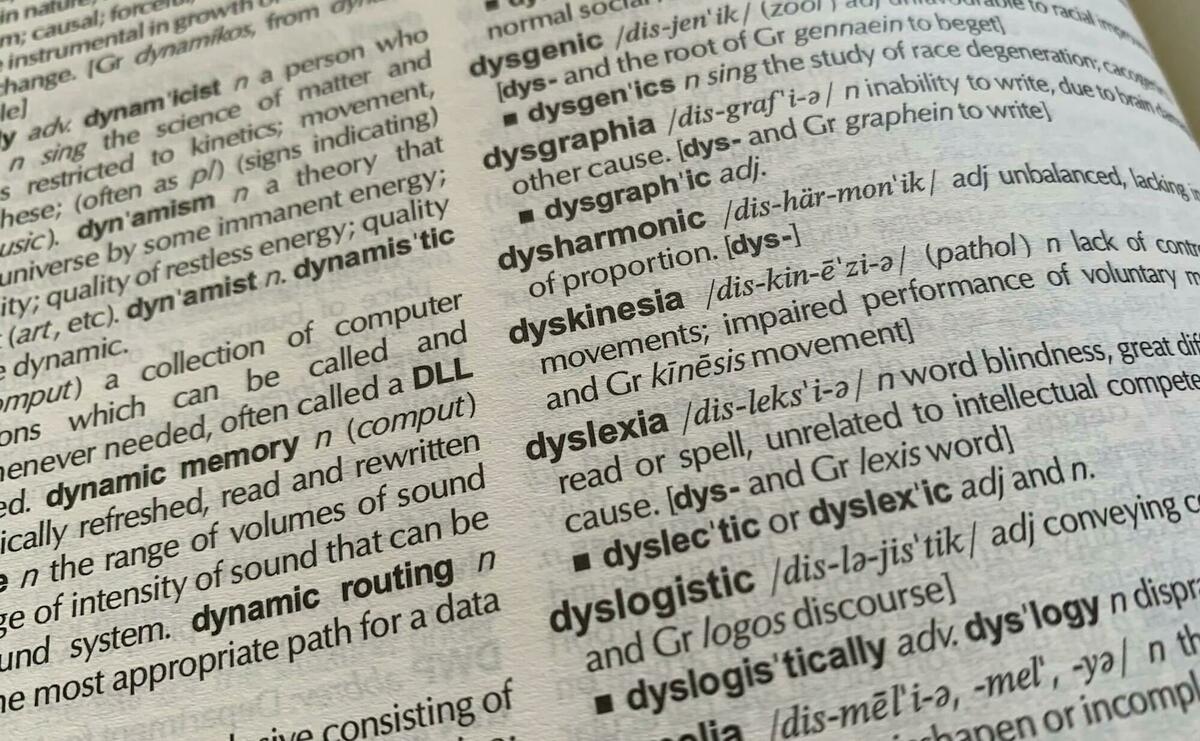Dyslexia: Overcoming Reading Difficulties
Although dyslexic people have diverse combinations of strengths and problems, one thing they always have in common is difficulty 'breaking the code' of written language. While some people overcome this obstacle and become great readers, many others struggle with the written word in their adult life. Their difficulties may be caused by phonological awareness, working memory, or processing speed deficiencies. Reading may be difficult and painful for certain people due to co-occurring visual stress disorders.

Whatever the underlying cause, dyslexic learner is likely to read significantly more slowly than their non-dyslexic classmates, which will influence comprehension, enjoyment of reading, and willingness to take up a book. We also know that youngsters who do not read miss opportunities to expand their vocabulary. The figure below depicts the vicious circle that this creates.
If we want to help dyslexic learners overcome their reading issues and establish a level playing field in terms of vocabulary knowledge and readiness to engage with the printed page, we must provide adequate support from the start of a child's educational journey.
Fortunately, instructors and parents/caregivers can access a wealth of tried-and-true resources and practices. The British Dyslexia Association's new 2nd edition Dyslexia Friendly Schools Good Practice Guide covers many of these. The second chapter of the Guide focuses on reading skills, providing a variety of ways to assist dyslexic learners, whether they are in the early stages of learning phonics or developing a love of books and reading. Several of these tactics are described here, but the Guide has many more.
We offer recommendations for teaching phonics skills from Frances Robertson and Lisa Ryan of Yorkshire Dyslexia Network, including:
- Adjust expectations for the number of new phonemes introduced based on an assessment of the learner's memory and processing abilities.
- Provide several opportunities for over-learning and guarantee that a cross-curricular approach to teaching reading skills is created.
- Use a variety of 'hands-on' games and activities to engage the learner and multi-sensory teaching approaches to engage many senses simultaneously.
- Provide training workshops for parents so that they may help their children at home.
Leicester City Council offers recommendations on how to boost reading in the classroom:
- Match the book's level to the learner's reading ability to minimize irritation and the learner's age and interests.
- Use a variety of reading resources rather than relying on a single reading method.
- Be careful not to overwhelm emerging readers by moving too rapidly. Instead, allow them to develop at their own pace.
- Encourage students to reread texts; familiarity with the content promotes fluency and the development of word recognition abilities.
- Improve reading comprehension by:
- pre-teaching and focusing on new vocabulary and essential terms
- discussing the book before beginning to read
- asking questions as you read to assess knowledge and maintain interest
While the Willows School in Rotherham has some suggestions for parents to develop a love of reading:
- Read aloud to your youngster on a regular basis.
- Allow your youngster to choose their own books from the library or bookstore.
- Pay attention to your child's reading and avoid overcorrecting.
- Praise your child's reading accomplishments, no matter how big or tiny they are; remember that small steps are still essential!
To these suggestions, I'd add the following:
- Make reading a social activity by discussing books you've read together and revisiting and practicing new terminology.
- Encourage active reading by, for example, highlighting new language, reading aloud, making predictions, discussing with peers, taking notes, or drawing images, diagrams, or mind maps to process and review information.
- Foster an interest in words and language by teaching morphology and word-building skills to enhance awareness of spelling patterns; demonstrate how the understanding of word derivation may help form word families and offer clues about the meanings of new vocabulary.
- Read poetry, theatre, or comics / graphic novels, where text blocks are shorter and less daunting.
Above all, reassure students that there is no right or wrong way to read, no matter what they choose to read or how they access it, whether it's by reading aloud rather than silently, using assistive technology to convert text to speech, or using different color backgrounds or specific fonts to make the text clearer and more accessible. But, most essential, it demonstrates to children and young people that they can succeed at reading and, in doing so, enhance their lives by providing them with access to a world of books and literature.